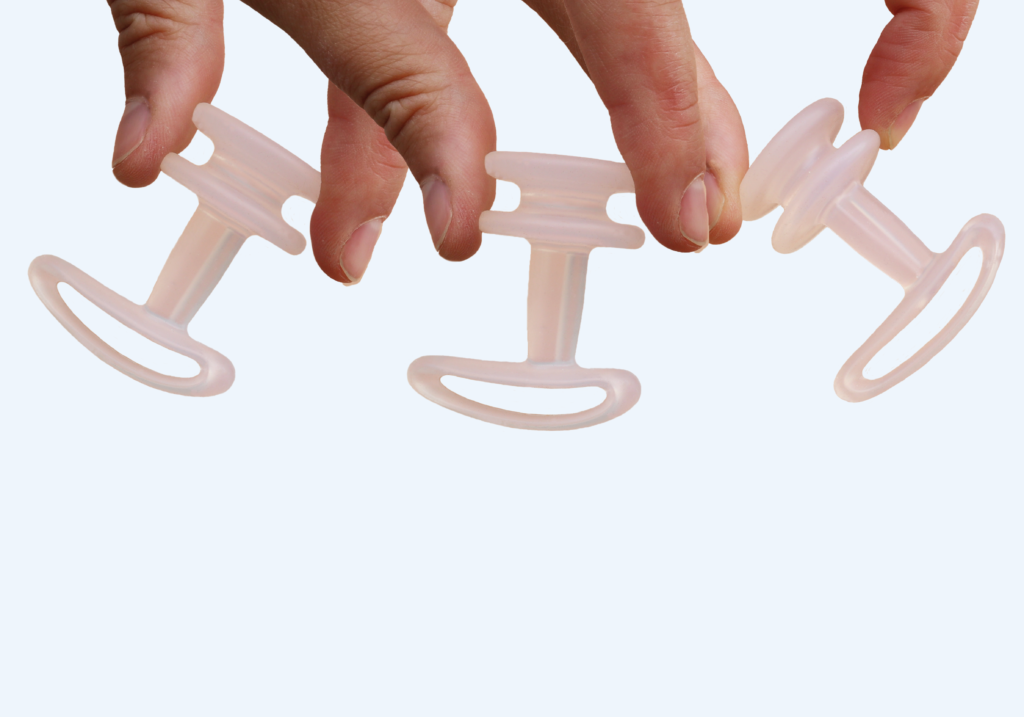Do you wet yourself whilst in sports, jump, sneeze or laugh? Then you may suffer from stress urinary incontinence (SUI), the most common form of incontinence. But you are far from alone. 1 out of 3 women has experienced leakage at some point in her life.
There is not a one approach that fits all when it comes to the treatment for stress incontinence, but there are many non-surgical treatments and options that you can explore on your own. There are also aids that you can buy yourself or get on prescription. In some cases, you even have the right to get prescribed free incontinence aids, totally free of charge. Everyone has the right to a medical assessment of their incontinence. ICS (International Continence Society), which is commercially independent has developed an international site with very good information about different types of urinary incontinence and how it is treated.
Below is a summary of the aids and treatments available for stress incontinence:
Pelvic floor muscle training (Kegel exercises)
In case of stress incontinence, pelvic floor muscle training is the first line treatment. Pelvic floor muscle training, also known as Kegel exercises, means strengthening the pelvic floor muscles around the bladder and urethra through various exercises. Pelvic floor exercises can often cure or improve stress incontinence, but it doesn’t always help.
Aids for pelvic floor muscle training
In some cases, vaginal weighted cones or biofeedback might help. Vaginal cones (different sizes and weights) are inserted into the vagina, and then you use your pelvic floor muscles to hold the cones in place. Whilst using biofeedback, you insert a pressure sensor into your vagina that measures how hard you squeeze. The sensor is wirelessly connected to an app in your smart phone and as you contract and relax your pelvic floor muscles, you can follow your exercise session on the phone.
Absorbent products
Absorbent pads are very commonly used for urine leakage management. The most important point is that the pad allows urine to pass through while keeping the skin dry, it should also quickly absorb the urine and prevents an unpleasant odour, and of course doesn’t leak. The incontinence pads are available both as disposable pads, and as washable reusable pads. There are also reusable incontinence briefs or incontinence bikinis for swimming. If you experience leakage whilst sleeping, you can use an absorbent mattress cover.
Vaginal devices
Vaginal devices, also called vaginal inserts or vaginal supports, are used to reduce or prevent urine leakage due to stress incontinence. The device is inserted into the vagina, similar to a tampon, and prevents leakage by supporting the urethra or bladder neck. They can be bought at several pharmacies, but are also available on prescription from for example, a doctor, nurse or physiotherapist.
There are different types of vaginal inserts to buy. Efemia Bladder Support is one of them. Efemia supports the urethra intravaginally, so it regains its natural shape. Efemia is reusable, made of soft medical grade silicone and comes in three different sizes.
There are also incontinence foam tampon-shaped cylinders that are made of plastic or polyurethane. They support the bladder neck and are disposable. Even pessaries or tampons, which are not really designed as aids, can in some cases provide enough support to relieve or reduce leakage.
Electrostimulation/biofeedback
Electrostimulation is mainly used for an overactive bladder or urge incontinence but can also be used for stress incontinence. An electrode is temporarily placed in the vagina. The electrical impulses sent by the electrode stimulate the nerve pathways and the muscles contract automatically. It helps the body regain its natural reflexes and the bladder calms down. Testing is done by a urotherapist or incontinence nurse with special training and can thereafter be managed by yourself at home.
Medical treatment
It would have been great if you could take incontinence tablets or a nasal spray to cure stress incontinence. Unfortunately, there is no such miracle. Available pharmaceuticals only help with urge incontinence or an overactive bladder, and herbal remedies have no proven effect.
Surgical treatment
The most common surgical method for stress incontinence is called Tension free Vaginal Tape (TVT). The surgery is performed under local anaesthesia and means that a sling is inserted through two small holes in the skin above the pubic bone. The sling then supports the urethra. The sling procedure for stress incontinence has shown good outcomes in terms of results and side effects, but the TVT sling is a permanent implant that grows firmly into the tissue and is therefore difficult to remove. Hence, side effects can last your whole life.
Since surgery always carries the risk of side effects that can be even more troublesome than your incontinence, it is only recommended if other methods have not worked and if you feel that your problems are affecting your quality of life greatly and it is worth the risk.

